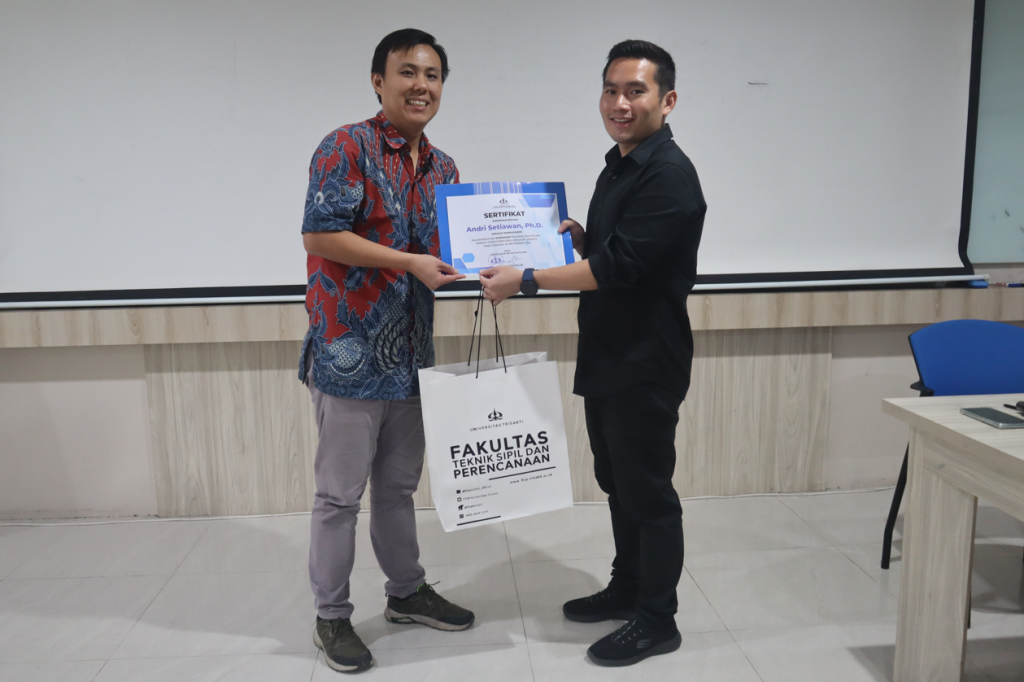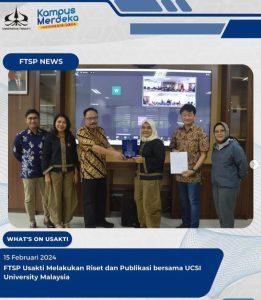- Jalan Kyai Tapa No. 1 Grogol
- Jakarta Barat, Indonesia
- Phone: (62-21) 566 3232
- Fax: (62-21) 564 4270
- Email: humas@trisakti.ac.id
News

Guest Lecture for Civil Engineering Department Featuring Andri Setiawan, Ph.D
The Civil Engineering Department recently held a guest lecture featuring Andri Setiawan, Ph.D., as the speaker and Dr. Usman Wijaya, S.T., M.T., as the moderator. This event took place on Tuesday, September 10, 2024, at the Civil Engineering Department, Universitas Trisakti.
Dr. Setiawan, a postdoctoral researcher in Building Resilience at ICITECH, Universitat Politècnica de València (UPV), Spain, discussed the importance of robustness in structural systems. He explained that robust structures, which rely on continuity across the structural system, are effective at preventing collapse. However, in extreme scenarios of total structural failure, this continuity can backfire, potentially contributing to a more extensive final collapse. This occurs because failing structural elements can pull residual energy from the system, amplifying collapse impacts across the structure instead of isolating them.
To address this issue, a new design approach, known as fuse-based segmentation, is currently under development. This approach synergizes continuity (for redistributing loads following early signs of failure) with building segmentation into discrete sections (to isolate collapse after a more severe initial failure).
Fuse-based segmentation can be implemented using two types of segment boundaries: (1) strong boundaries and (2) force-limiting elements. Both are based on a hierarchy of failure control among structural components within a building system. Vertical load-bearing elements, such as walls and columns, are enhanced to withstand unbalanced forces transferred from horizontal floor systems (including beams and slabs) during collapse events.
Full-scale tests on specially constructed precast building specimens have demonstrated that fuse-based segmentation can be applied through partial-strength connections and strengthened column designs. These precast structures withstood two edge column removals without partial collapse, validating that the proposed concept does not violate continuity requirements. When subjected to a larger initial failure, the building successfully segmented, isolating collapse to only the initially affected area. This research confirms that segmentation provides a last line of defense against progressive collapse when other structural elements fail.
This guest lecture aimed to provide valuable insights and serve as a platform for the academic community to discuss advancements in civil engineering technology.






